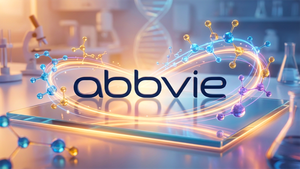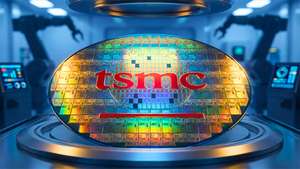Treatment with GT-02287 also restored glucocerebrosidase (GCase) enzymatic function, reduced aggregated α-synuclein, neuroinflammation and neuronal death, increased dopamine levels and improved motor function
Data presented at the International Congress of Parkinson's Disease and Movement Disorders®
Gain remains on track to begin a Phase 1 clinical study of GT-02287 later this year
BETHESDA, Md., Aug. 28, 2023 (GLOBE NEWSWIRE) -- Gain Therapeutics, Inc. (Nasdaq: GANX) (“Gain”, or the “Company”), a biotechnology company leading the discovery and development of the next generation of allosteric small molecule therapies, today announced preclinical data demonstrating the Company’s lead drug candidate GT-02287 significantly decreased Parkinson’s disease (PD)-associated pathology and improved motor dysfunction in two different preclinical models of Parkinson’s disease. Of note, GT-02287 significantly reduced plasma Neurofilament Light Chain (NfL) levels, an emerging biomarker for neurodegeneration, in a mouse model of GBA1-PD. The findings are being presented in two posters, including one that was accepted as a late breaking abstract, at the International Congress of Parkinson's Disease and Movement Disorders® being held in Copenhagen, Denmark from August 27-31, 2023.
“The compelling data from two preclinical Parkinson’s disease models with our lead drug candidate GT-02287 show that this orally administered allosteric regulator of GCase restored enzymatic function and significantly reduced the pathological hallmarks and motor dysfunction associated with Parkinson’s disease,” said Joanne Taylor, Ph.D., Senior Vice President of Research at Gain. “GT-02287 also markedly decreased plasma NfL, an emerging and important neurodegeneration biomarker that can be measured in blood, which is very exciting as we consider its application in clinical trials.”
The first poster titled “Neuroprotective effect of GT-02287, a brain-penetrant structurally targeted allosteric regulator of glucocerebrosidase, leads to a significant reduction of plasma NfL levels and improvement in behavioural deficits in a mouse model of GBA1 Parkinson’s disease” (Late-breaker Abstract #LBA-13) will be presented by Dr. Taylor on each poster presentation date between 13:00 and 15:00 in the exhibition hall.
Researchers used a mouse model of GBA1-PD, created using conduritol beta epoxide (CBE) to induce GCase deficit comparable to GBA1-PD. Oral administration of GT-02287 over 14 days significantly reduced aggregated α-synuclein, neuroinflammation and neuronal death in the brain. Treatment with GT-02287 also increased tyrosine hydroxylase (TH) immunostaining, a marker of dopaminergic neurons, as well as dopamine levels, and improved motor strength and motor coordination.
Prominently, GT-02287 significantly reduced plasma NfL levels in this GBA1-PD model. The emerging neurodegeneration biomarker was previously accepted by the U.S. Food and Drug Administration (“FDA”) for the accelerated approval of tofersen for the treatment of amyotrophic lateral sclerosis (ALS) associated with a mutation in the superoxide dismutase 1 (SOD1) gene (SOD1-ALS) and was recommended by the FDA as an exploratory endpoint for neuronopathic mucopolysaccharidosis II (MPS II) clinical trials.
Dr. Taylor will also present a second poster on August 30th between 13:00 and 15:00 titled “GT-02287, a brain-penetrant structurally targeted allosteric regulator for glucocerebrosidase shows evidence of pharmacological efficacy in an animal model of Parkinson’s disease” (Abstract #1376). Data from the poster describes the effect of GT-02287 on rotenone-induced neurotoxic effects in a PD animal model. GT-02287 restored GCase levels in the brain and reduced the accumulation of toxic GCase substrates in the cerebrospinal fluid. Additionally, GT-02287 reduced aggregated α-synuclein and TNF-α levels, improved lysosomal health, as well as increased TH expression levels in the substantia nigra.
“Together, the data from both posters demonstrate that our lead drug candidate GT-02287 can restore GCase protein function, protect against the neuropathological features of Parkinson’s disease, and reduce neurodegeneration measured by the emerging biomarker NfL,” said Matthias Alder, Chief Executive Officer of Gain Therapeutics. “Buoyed by these encouraging data, we look forward to initiating the Phase 1 clinical study with GT-02287 and advancing the development of this potentially best-in-class treatment for GBA1 Parkinson’s disease.”
About Gain Therapeutics, Inc.
Gain Therapeutics, Inc. is a biotechnology company leading the discovery and development of next generation allosteric therapies. Gain’s lead drug candidate GT-02287, in development for the treatment of GBA1 Parkinson’s disease, has completed IND-enabling GLP toxicology studies. Clinical evaluation of GT-02287 is expected to begin this year.
Leveraging AI-supported structural biology, proprietary algorithms and supercomputer-powered physics-based models, the company’s SEE-Tx® discovery platform can identify novel allosteric binding sites on disease-implicated proteins, pinpointing pockets that cannot be found or drugged with current technologies. Gain’s unique approach enables the discovery of novel, allosteric small molecule modulators that can restore or disrupt protein function. Deploying its highly advanced platform, Gain is accelerating drug discovery and unlocking novel disease-modifying treatments for untreatable or difficult-to-treat disorders including neurodegenerative diseases, rare genetic disorders and oncology. For more information, please visit GainTherapeutics.com and follow us on LinkedIn.
Cautionary Note Regarding Forward-Looking Statements
This press release contains "forward-looking statements" within the meaning of the Private Securities Litigation Reform Act of 1995. All statements in this press release other than statements of historical facts are “forward-looking statements”. In some cases, you can identify these statements by forward-looking words such as "may," "might," "will," "should," "expect," "plan," "anticipate," "believe," "estimate," "predict," "goal, " "intend," "seek, " "potential" or "continue," the negative of these terms and variations of these words or similar expressions that are intended to identify forward-looking statements, although not all forward-looking statements contain these words. Forward-looking statements in this press release include, but are not limited to, statements regarding: the Company’s observations based upon the reported preclinical data; the Company’s expectations regarding the timing of commencement of a Phase 1 clinical program for GT-02287 for GBA1 Parkinson’s disease; and the potential therapeutic and clinical benefits of GT-02287 for the treatment of GBA1 Parkinson’s disease. These forward-looking statements are based on the Company’s expectations and assumptions as of the date of this press release. Each of these forward-looking statements involves risks and uncertainties that could cause the Company’s preclinical and future clinical development programs, future results or performance to differ materially from those expressed or implied by the forward-looking statements. These statements are not historical facts but instead represent the Company's belief regarding future results, many of which, by their nature, are inherently uncertain and outside the Company's control. Many factors may cause differences between current expectations and actual results, including the risk that observations from preclinical studies are not indicative or predictive of results in clinical trials; unexpected safety or efficacy data observed during preclinical studies or clinical trials, clinical trial site activation or enrollment rates that are lower than expected; the impacts of the post-COVID-19 environment and other global and macroeconomic conditions on the Company’s business; the Company’s financial position; changes in expected or existing competition; changes in the regulatory environment; the uncertainties and timing of the regulatory approval process; and unexpected litigation or other disputes. Other factors that may cause the Company’s actual results to differ from those expressed or implied in the forward-looking statements in this press release are identified in the section titled “Risk Factors,” in the Company’s Annual Report on Form 10-K filed with the Securities and Exchange Commission on March 23, 2023 and its other documents subsequently filed with or furnished to the Securities and Exchange Commission from time to time. All forward-looking statements contained in this press release speak only as of the date on which they were made. The Company undertakes no obligation to update such statements to reflect events that occur or circumstances that exist after the date on which they were made, except as required by law.
Investor & Media Contact:
Susan Sharpe
Linnden Communications
(919) 602-2330
susan@linndencom.com







